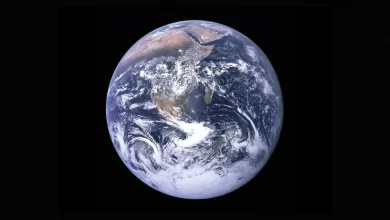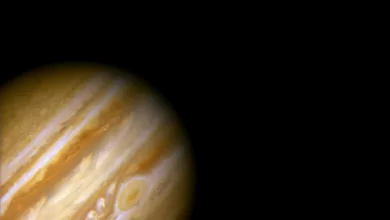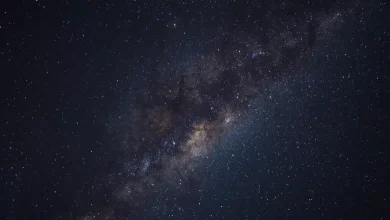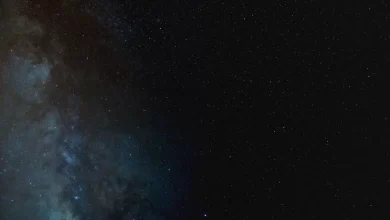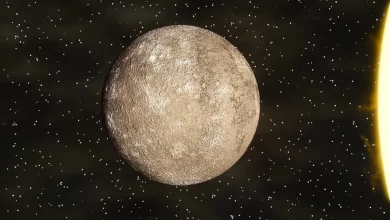The moon is the closest to Earth. It doesn’t have its own light. It is illuminated by the sun’s reflected light. People used to believe that the moon was a goddess, and they worshiped it as such. It is a massive globe similar to the Earth but much smaller. It shines at night when the sun is not present. It emits a cool and refreshing light that looks great at night.
- Our natural satellite moon spins around its axis for the same duration as the Earth does. It goes one lap around the Earth, which makes us always see the same side of the moon always. This is known as Synchronous rotation.
- When the moon is directly overhead, we weigh slightly less than at all other times; this is because of the gravity of the moon.
- If a person weighs 45kg (99 pounds) on Earth, he/she will weigh 7.5 kg (16.4 pounds) on the moon. However, the mass would remain the same.
- The radius of the moon is 27% the size of the Earth. The radius of moon is 1,737.1, whereas the radius of Earth is 6,371 km.
- The moon’s mass is about 1.2% of the Earth’s mass. It would take 81 earth’s moons to equal the mass of the Earth.
- The gravity of the moon is 1/6th of than that of Earth. The surface gravity of the moon is much weaker because it is far less massive than Earth.
- The moon has earthquakes that last for up to 10 minutes. Because it’s so dense and dry, they make it vibrate like a tuning fork.
- The dark side of the moon is turquoise.
- The moon orbits the Earth at a speed of 3,683 kilometers per hour (288 miles per hour). During this time, it travels a distance of 2,290,000 kilometers (1,423,000 miles).
- When the dinosaurs were alive, there were active volcanoes on the moon.
- Every year the moon moves about 1.5 inches further away from the Earth.
- Moondust smells like gunpowder. Harrison ‘Jack’ Schmitt of Apollo 17’s said that when we landed, ‘everyone’s instant impression of the smell was that of spent gunpowder.
- The moon is just like a four billion-year-old desert.
- Because there is no weather on the moon, the footprints of the 12 men who walked on it are still there.
- Some Area names of the moon include the Marsh of Decay, Ocean of Storms, and the Lake of Death.
- February month of the year 1865 is the only month in recorded history to have no full moon in the sky.
- It is thought that the moon was formed when a planet collided with Earth and knocked off a huge chunk about 4.5 billion years ago.
- When the moon is directly overhead, you weigh slightly less than at all other times because of the effect of its gravity.
- It takes 1.25 seconds for light, reflected by the moon, to reach Earth.
- On one side of the moon, the sun shines for about 13 and a half days, followed by 13 and a half nights of darkness. During the daytime, when sunlight reaches the moon’s surface, the temperature can reach 127 degrees Celsius(260 degrees Fahrenheit). Whereas when the sun goes down, the temperature can dip to minus 173° C ( minus 280 ° F).
- New research suggests that Earth’s moon is around 30 million years younger than was previously thought!
- The moon is moving away from the Earth at a rate of about 4 centimeters (1.6 inches) a year.
- The Earth’s core is about the same size as the moon.
- A full moon is nine times brighter than a half-moon.
- The sun is 400,000 times brighter than the full moon in the sky.
- The Lunar Module from the Apollo missions required less computer power to land on the moon than today’s average smartphone.
- Hipparchus calculated the size and distance of the moon and cataloged 1020 stars in the second century BC.
- The moon is one million times drier than the Gobi Desert.
- Because the moon’s orbit is elliptical and tilted, we actually see a bit more than half of its surface.
- There was no full moon on Halloween until the year 2020.
- The moon has an atmosphere, but it’s 0.000000000000003 times as thick as the air on Earth’s surface.
- The crew of Apollo 11, who put the first man on the moon have the same initials as the first man on Earth. Armstrong, Aldine, Collins: Adam, Abel, Cain.
- If you fold a piece of A4 paper in half 42 times, it will reach the moon. This is because when a paper will be folded 42 times, it will be 4 x 10^10 cm. The distance to the moon is about 380,000 km, or about 4 x 10^10 cm indeed.
- The surface of the moon is pitted with craters of all sizes up to 250 km in diameter. These have been created by meteorites smashing into the surface long ago.
- Full Moons occur 29.5 days apart, so we sometimes get 13 full Moons a year.
- The moon actually has mirrors on it. They were left there by astronauts who wanted to bounce laser beams off them so that the distance to the moon can be measured with amazing accuracy.
- The saying ‘once in a blue moon refers to the occurrence of two full moons during one calendar month. This occurs every two to three years.
- Sunday, July 20, 1969: Neil Armstrong was the first man to walk on the moon, Edwin Aldrin was the second. They were members of Apollo 11 and landed in the Sea of Tranquility. The Lunar Excursion Module was named the “Eagle.” Michael Collins stayed onboard the mother ship, “Columbia.”
- Astronaut Neil Armstrong first stepped on the moon with his left foot.
- There is a high and low tide because of our moon and the sun.
- According to estimates, the moon weighs 81 billion tons.
- The sun is 400 times in diameter larger than the moon but is 400 times further away from Earth, making them appear the same size.
- 41% of the moon is not visible from Earth at any time.
- There are over 200 moons in our solar system. Our earth moon is the second densest of all. Whereas Jupiter’s moon name lo is the densest.
- A recent study by NASA shows that water is present on the surface of the moon in the form of ice.


